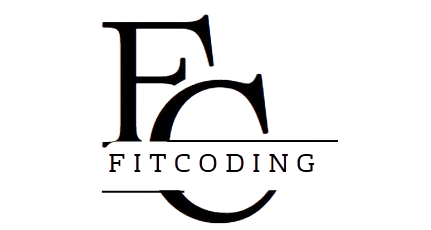In an era dominated by real-time engines like Unreal and Unity Source Filmmaker still holds its ground as a powerful animation suite, beloved by creators for its depth and modding flexibility. But there’s one core process that often confuses both newcomers and veterans alike: SFM Compile.
Understanding how to compile models, maps, and scenes properly is essential if you want smooth performance, optimized files, and professional-grade output. This guide will walk you through everything you need to know about the SFM Compile ecosystem—from tools and techniques to common pitfalls and solutions.
What Is SFM Compile?
SFM Compile refers to the process of converting assets such as models, textures, maps, and scenes into optimized formats that Source Filmmaker can render, play back, and manipulate efficiently.
This process often involves:
- Compiling models from .qc (QC script) files into .mdl files
- Baking lighting into maps
- Generating motion paths and lip-sync data
- Packaging textures into VTF (Valve Texture Format) files
Think of SFM Compile as a bridge between your raw creative content and what SFM can actually use in the engine.
Why Compilation Matters in Source Filmmaker
Many users assume that dropping a model into SFM is enough. But uncompiled models or improperly formatted assets can lead to:
- Crashes during rendering
- Missing textures
- Animation glitches
- Long render times
By compiling, you’re not just optimizing performance—you’re making sure your assets are in a language SFM understands.
How the SFM Compile Process Works
At its core, SFM Compile takes source materials and processes them using various Valve tools. Here’s a simplified workflow:
- Prepare Source Files – 3D models, textures, maps, and sound files.
- Write QC Scripts – Instructions that tell the compiler what to do with your model.
- Use the Compile Tool – Usually studiomdl.exe, found in the Source SDK.
- Output Compiled Assets – Assets are converted into game-ready formats like .mdl, .vtx, .vvd, etc.
These compiled files are then loaded into SFM through the appropriate directories.
Types of SFM Compile Operations
| Compile Type | Purpose | File Formats Involved |
| Model Compilation | Converts .SMD or .DMX to .MDL | .smd, .qc, .mdl |
| Texture Compilation | Packages image files into Valve Texture Format | .tga/.png to .vtf/.vmt |
| Map Compilation | Converts .VMF to .BSP (for SFM scenes) | .vmf to .bsp |
| Scene Compilation | Finalizes SFM shots for rendering | Internal to SFM |
| Sound Compilation | Prepares sound files for sync and playback | .wav, .mp3 |
Each type requires specific tools and scripts tailored to the asset type.
Key Tools for Compiling in SFM
To run SFM Compile operations, you’ll need to familiarize yourself with Valve’s suite of tools:
- Studiomdl.exe – The main compiler for models
- VTFEdit – Converts images into Valve texture format
- Crowbar – A GUI for decompiling and compiling models
- Hammer Editor – Used for map creation and compilation
- Faceposer – Helps in compiling phoneme and facial animation data
- Source SDK – Contains the core tools required for most compile tasks
Each tool has its own learning curve, but mastering them opens up endless creative possibilities.
Using the Command Line for Compilation
Most compile processes happen via the command line. Here’s a sample command to compile a model using studiomdl:
bash
CopyEdit
studiomdl.exe -game “C:\Program Files\Steam\steamapps\common\SourceFilmmaker\game\usermod” model.qc
You can include additional parameters for output directories, logging, and error checking. While GUI tools exist, the command line offers the most flexibility.
Troubleshooting SFM Compile Errors
Compiling isn’t always smooth. Here are common errors and how to fix them:
- Missing Texture Path: Ensure texture directories are properly set in the .qc or .vmt files.
- Invalid Bone Structure: Make sure bones are named and rigged according to SFM’s standards.
- ‘Too many verts’ Error: Simplify your model or split it into multiple meshes.
- Compile Tool Crash: Run tools with administrator privileges and check for corrupted files.
Common Mistakes to Avoid
- Skipping QC Scripting: This script defines the behavior of your model—never ignore it.
- Using Incorrect File Formats: Always convert assets to supported formats before compiling.
- Overlooking Texture Compression: Uncompressed textures can bloat file size and reduce performance.
- Ignoring Log Files: Compilation logs contain valuable info for debugging.
Real-World Use Cases in Machinima and Animation
Compilation is essential in serious animation projects, especially in machinima storytelling. Whether you’re building a detailed set or animating a complex character rig, proper compilation allows:
- Smooth playback without lag
- Compatibility across different systems
- Seamless integration into complex scenes
Popular machinima creators often share their QC scripts and compile methods for community learning.
Performance Tips During Compilation
- Use batch files for multiple compile runs
- Always save and back up source files
- Close unnecessary programs to avoid system memory issues
- Compile in a clean directory to avoid file conflicts
- Compress compiled files using tools like GCFScape if needed
These tips can drastically reduce compile times and improve stability.
SFM Compile vs Real-Time Rendering
| Feature | SFM Compile | Real-Time Rendering (e.g., Unity) |
| Asset Optimization | Yes | Not required |
| Customizability | Very high (scripts/tools) | Moderate |
| Learning Curve | Steep | More user-friendly |
| Animation Depth | Deep integration with models | Limited unless scripted |
| Performance | High with compiled assets | Depends on GPU and engine |
Although real-time engines offer speed, SFM Compile gives you unmatched control, especially for cinematic animations.
Community Resources and Further Learning
- Valve Developer Wiki – developer.valvesoftware.com
- SFM Official Steam Group
- Source Filmmaker Discord Servers
- YouTube Tutorials by Creators Like Zachariah Scott
- Crowbar GitHub Repository
Engaging with the community is a great way to level up your skills and stay current with new tools.
Conclusion & Next Steps
Compiling in Source Filmmaker isn’t just a technical step—it’s a creative one. Whether you’re animating epic stories, building intricate scenes, or developing mods, mastering the SFM Compile process gives you the control and flexibility to push your creations to professional standards.
Start small compile a basic model, test a texture pack, or troubleshoot a compile error. Over time, you’ll discover just how powerful SFM can be when you understand its underlying structure.
Frequently Asked Questions
Q1: Can I use Blender for SFM model creation?
Yes, but you must export your models as .smd or .dmx and write appropriate .qc scripts for compiling.
Q2: What’s the difference between decompiling and compiling?
Decompiling extracts existing assets for editing, while compiling converts your raw files into usable formats for SFM.
Q3: Do I need to compile for every update to my model?
Yes. Any change to geometry, textures, or bones requires recompilation.
Q4: How long does compilation take?
It varies—simple models take seconds, complex maps can take several minutes.











